
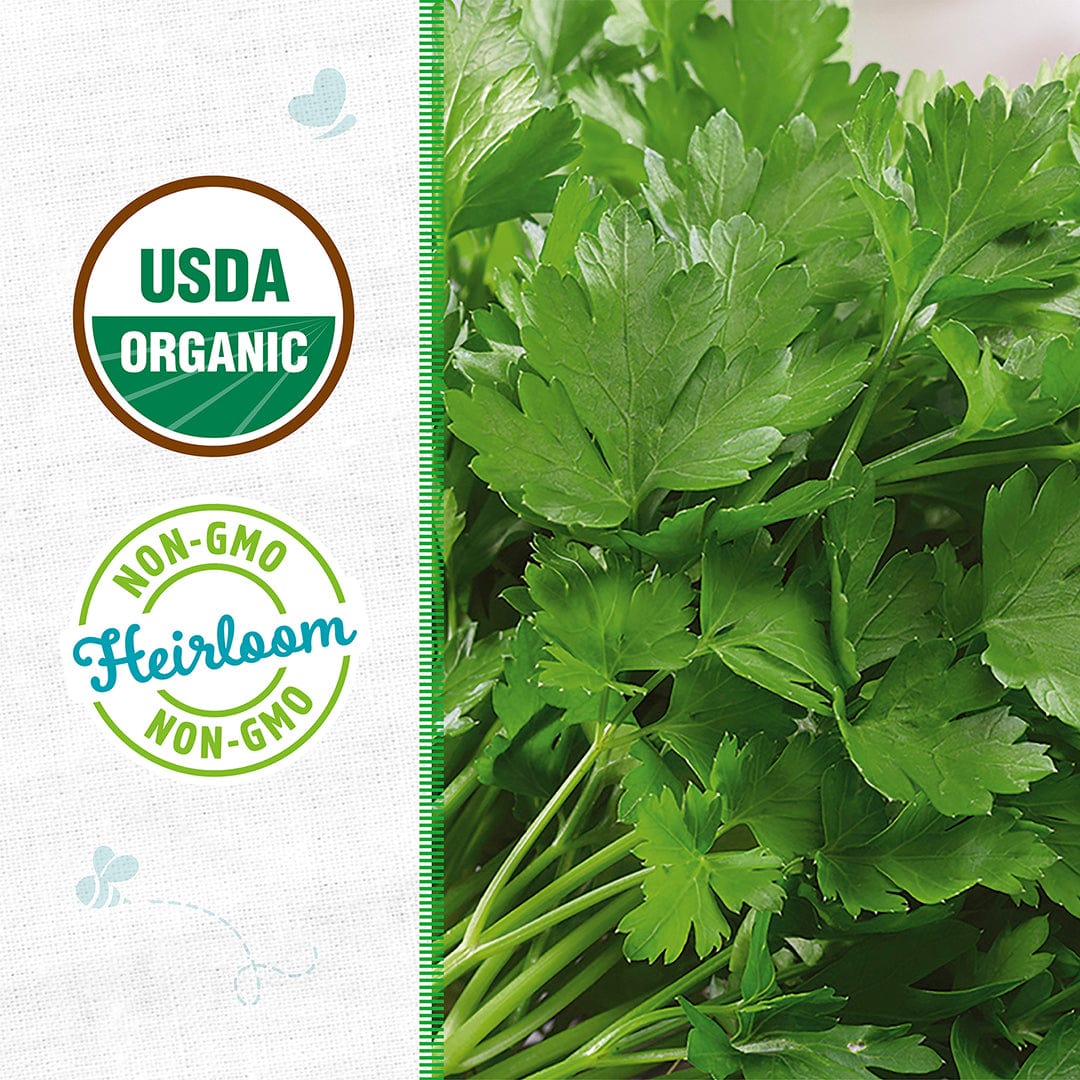
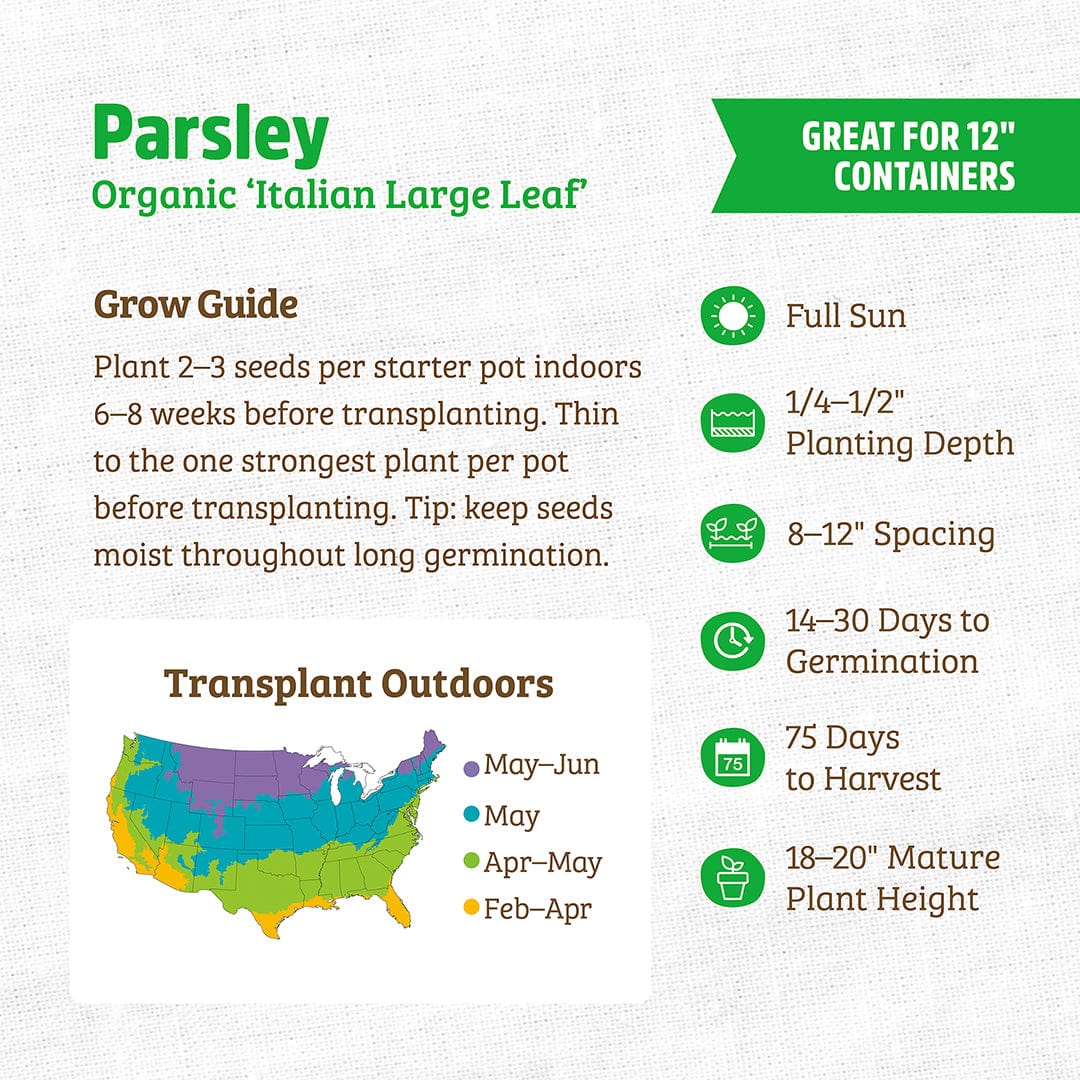

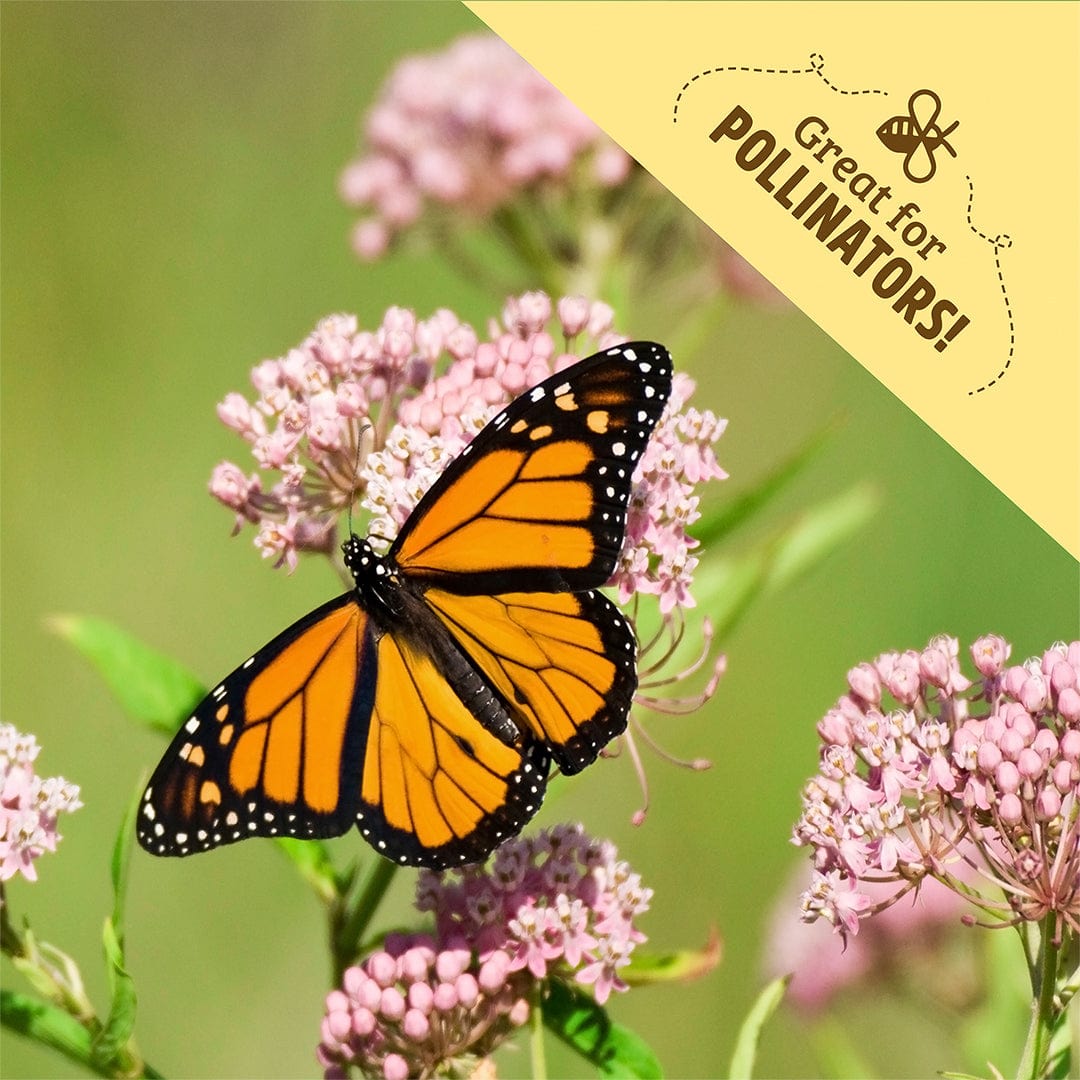
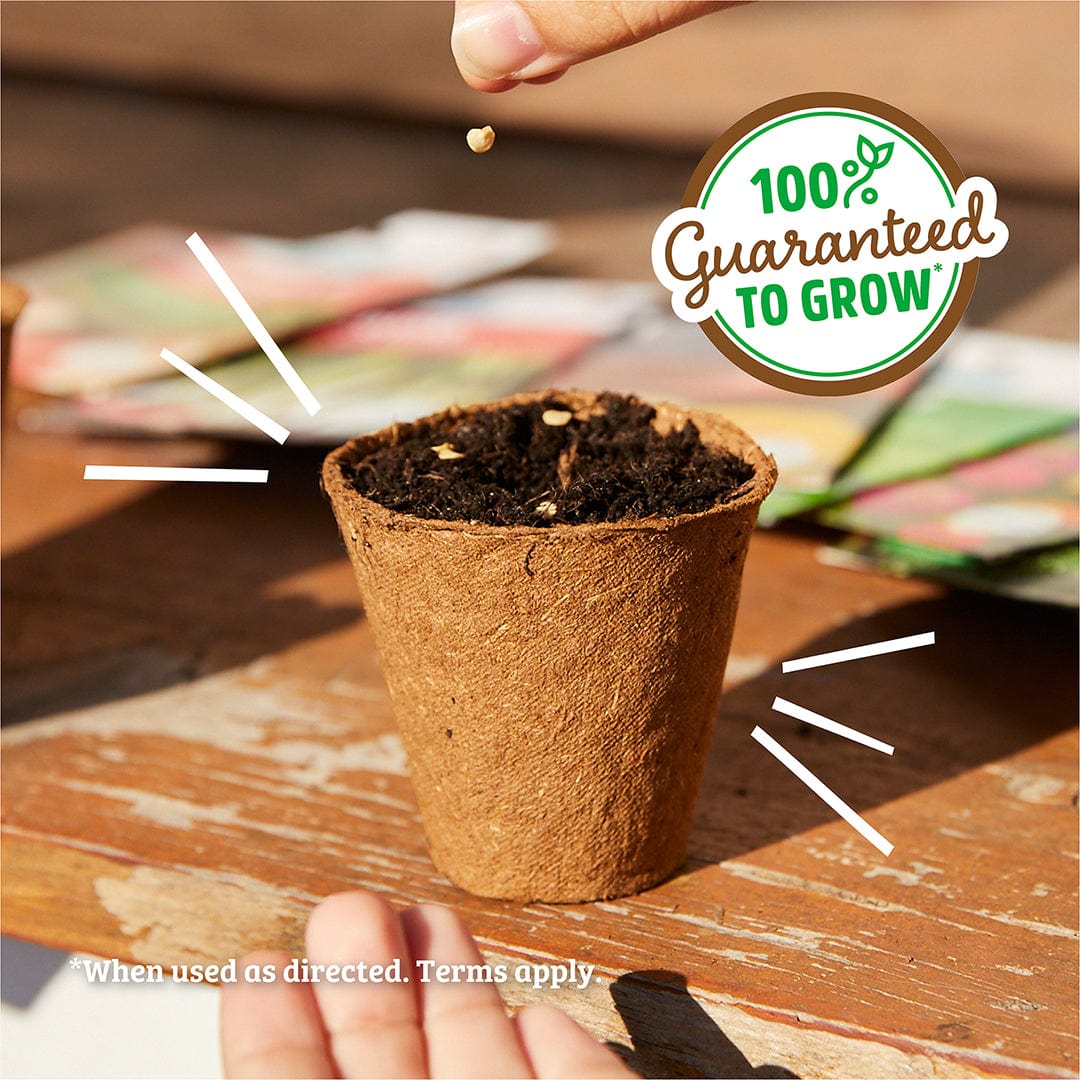

Save 10% Today w/ Code LetsGrow10
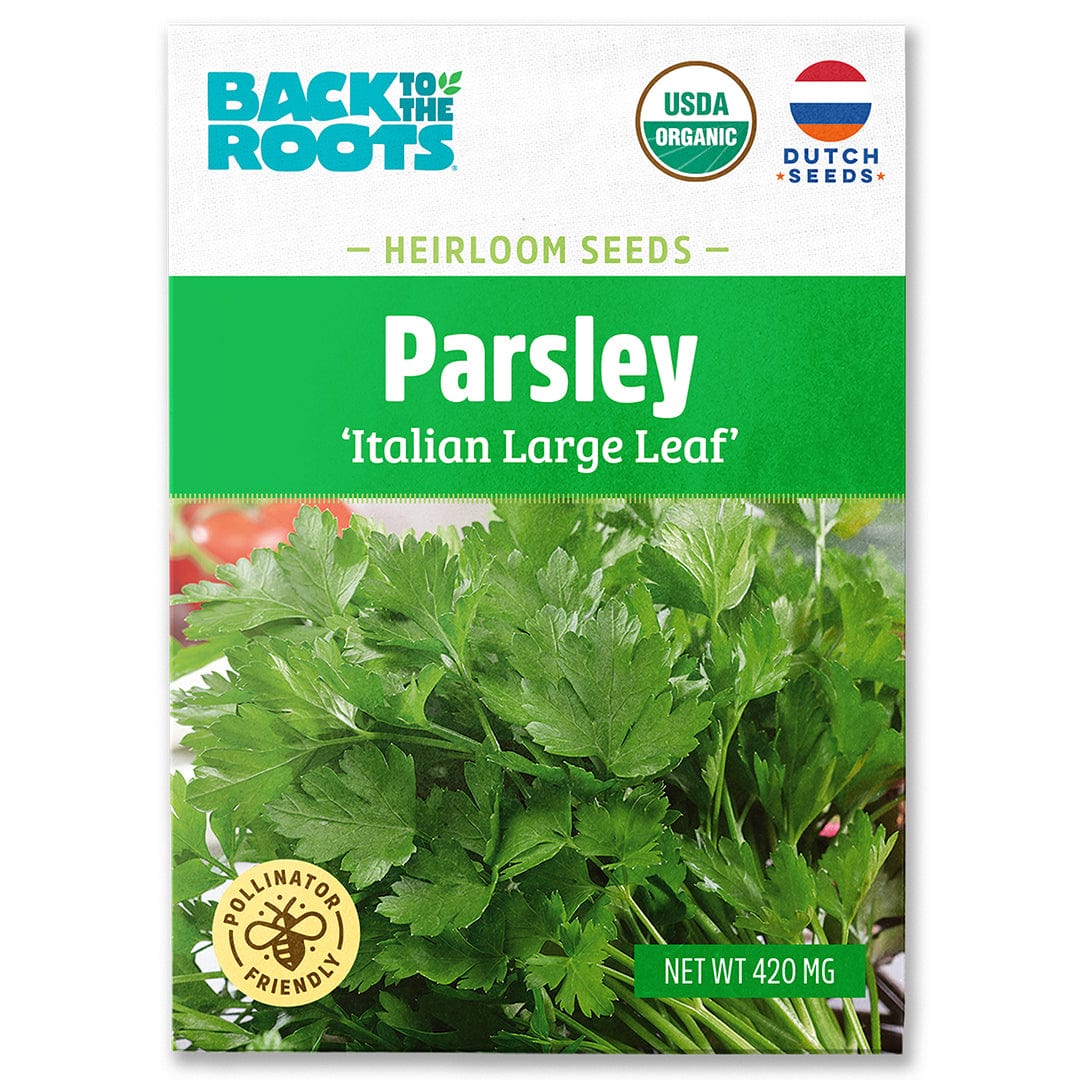



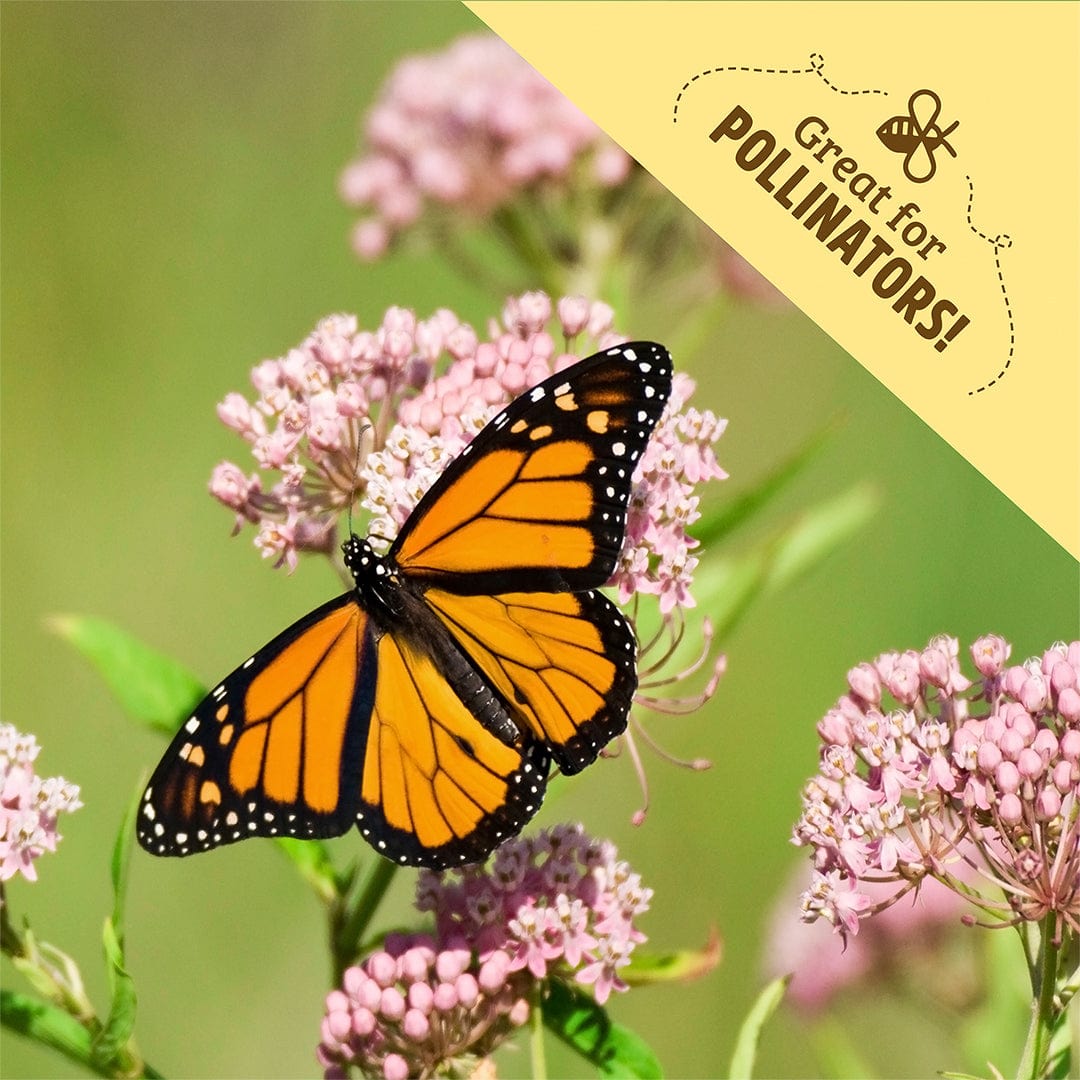
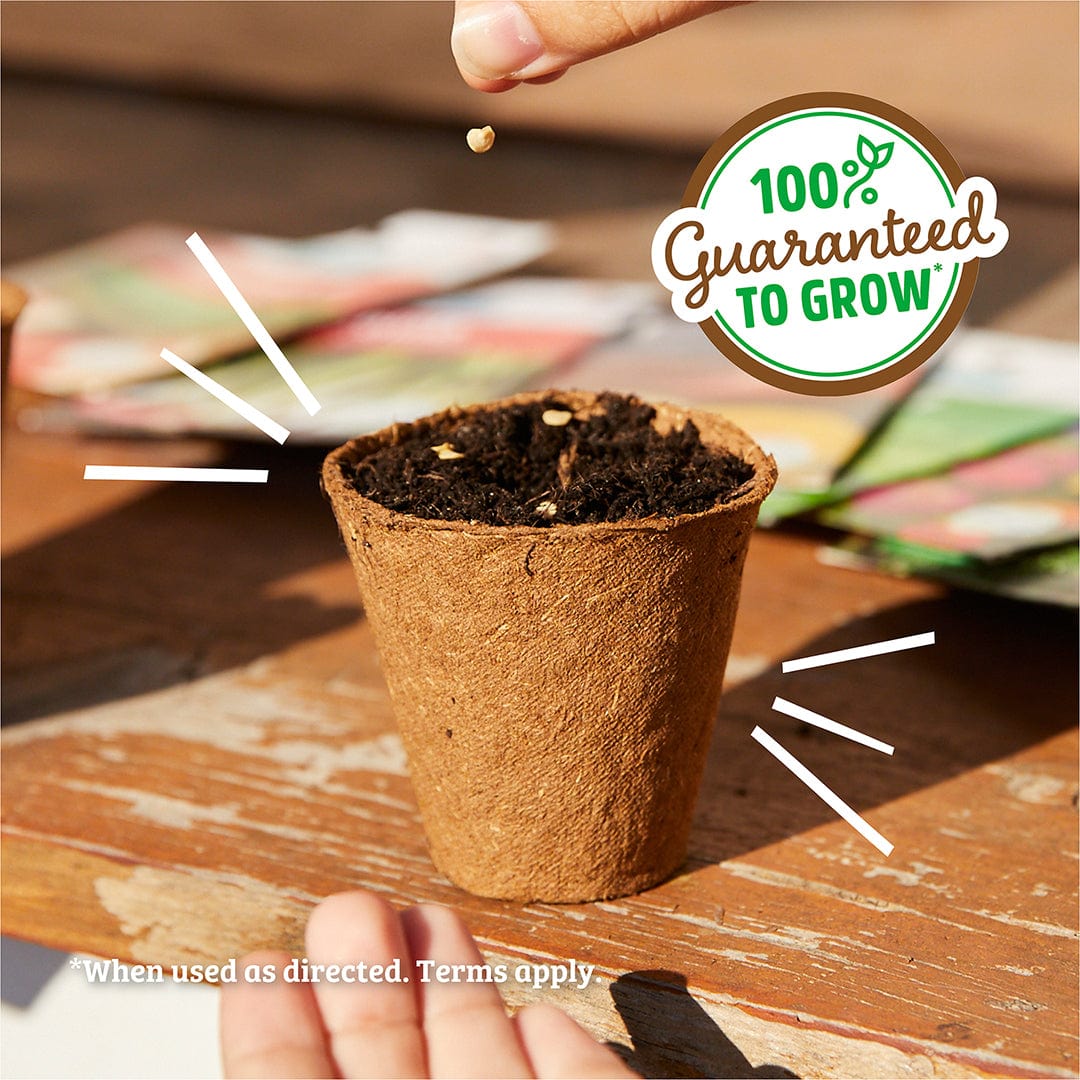

This breath-freshening herb is widely used as a garnish and flavoring in sauces, salads, and especially soups, as it lessens the need for salt. Parsley is a high source of Vitamins C & A and Iron.
For soil, use a potting mix that’s tailored for vegetables and herbs. For the best quality leaves, provide full sun (6 or more hours of direct sunlight) and consistent moisture (don’t let the topsoil become dry to the touch).
Use our grow calendar tool to find specific dates for your region! Note - seeds germinate slowly (14-30 days).
Plant seeds indoors in 1" starter cell containers and transplant outdoors after true leaves appear. Seeds usually take at least 3 weeks to germinate and require consistent moisture for reliable germination. For better germination, soak the seeds overnight.
If planted in a well-drained location, it can normally be wintered over (left outside to survive through winter) to produce a crop early the following spring. Mulch (add wood chips to insulate the soil) where temperatures go below 0°F. Sprinkle compost around the plant or supplement with a balanced fertilizer once or twice during the growing period, if necessary.
Parsley may be affected by stem rot, leaf spots, black swallowtail larvae, carrot fly, and celery fly larvae.
When the leaf stems have three segments, parsley is ready to be harvested. Clip leaves as needed. To maintain the crispness and appearance of freshly harvested parsley, refrigerate. Parsley can be used either fresh or dried. To dry, wash clipped leaves and spread out shallowly on screens in a warm, airy place. When thoroughly dry, rub and store in jars.

Organic Parsley Seeds — 'Italian Large Leaf'








Be the first to know about new collections and exclusive offers.